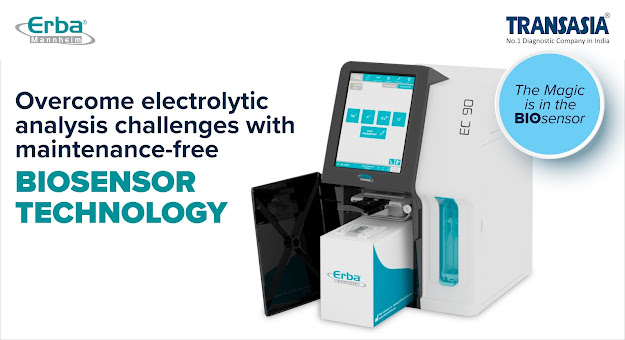Global IVD Market – the right time to take a plunge!
Recent technological advancements
in In-vitro diagnostics have been encouraging manufacturers to explore
opportunities beyond their home markets.
Read on to know more about the
exciting avenues opening up in this sector.
As India’s leading In-vitro Diagnostic
Company, we have set trends in driving the growth of this sector. While a lot
has been written about our well established base in the domestic market, an
important aspect is also how we understand the growing needs of developing
countries and offer dedicated solutions. Over a period, Transasia has acquired 14
companies globally and has been able to reach out to millions in over 130
countries.
From a broader perspective, for
any IVD player it is important to know what drives the market globally. As the
New Year dawns upon us, it is a good time to understand what is trending in the
international market.
Various advancements in the
conventional technologies of IVD, have been the key growth drivers. These
developments have in turn enabled personalized treatment through the emergence
of point-of-care (POC) tests and home-based testing. Today, test results for glycated
hemoglobin (HbA1c) or lipid profiles and other key biochemical parameters, are
available within a few minutes thus accelerating the further treatment course. This
is advantageous for the labs as well, as it aids in reducing the overhead
costs.
Another segment that is gaining
momentum is molecular diagnostics due to the prevalence of infectious diseases.
With nex-gen sequencing revolutionizing clinical diagnosis, several labs will
consider it for routine diagnosis. Moreover, rising fatal diseases such as CVD,
stroke and cancer are driving the global in-vitro diagnostic market.
Globally, the IVD market is
growing at a steady pace. At a CAGR of 6.7% it is expected to reach USD 102.4 bn
in 2022 from USD 74.1 bn in 2017. Geographically the market can be divided into
North America, Europe, Asia Pacific, Africa & the Middle East and Latin
America. While the North America market currently holds a market share of USD
31.1 bn vis-à-vis USD 18.5 bn of Asia Pacific, tables will turn in the coming
years, as Asia Pacific is expected to grow at a CAGR of 13.5% for 2017-22
vis-à-vis North America which is expected to grow at a CAGR of 3.4%.
Based on application, the market
is classified into reagents, instruments and services. The reagent segment
accounted for the highest growth in 2016 owing to the introduction of new novel
reagents and the wide availability of effective and cost-efficient reagents.
Going forward, the software and services is forecasted as the most lucrative
segment. Sophisticated data management systems, intuitive software and
artificial intelligence will contribute significantly to the growth.
Key players are focusing more on the emerging economies and improving the healthcare infrastructure especially in Asia-Pacific region. Additionally, factors such as aging demographics of the developed world, an increase in per capita income, the swiftly growing economies of India and China, increase in GDP, the rising disposable income and most importantly the shift from curative to preventive healthcare for both infectious and chronic diseases are expected to be opportunistic for the industry growth.
Key players are focusing more on the emerging economies and improving the healthcare infrastructure especially in Asia-Pacific region. Additionally, factors such as aging demographics of the developed world, an increase in per capita income, the swiftly growing economies of India and China, increase in GDP, the rising disposable income and most importantly the shift from curative to preventive healthcare for both infectious and chronic diseases are expected to be opportunistic for the industry growth.
Another interesting trend is adoption
of both organic as well as inorganic growth strategies by companies globally.
The key strategies undertaken by the companies are new product development
especially for multi-analyte detection & ‘Lab-In-A-Box’
type technologies, M&As, collaborations, partnerships and geographical
expansions. This obviously means good news for any Indian IVD company with
international operations.
“While there lays a sea of opportunities for the IVD players to engage in cross border expansion, certain roadblocks need to be watched out for. The regional and country-wise differences in regulatory policies, entry bottlenecks, affordability, logistics and healthcare infrastructure will have to be tackled.”
Being an emerging global
diagnostic player, we analyze each country's market landscape and IVD
requirements, and then tailor our entries, launches and marketing strategies to
gain a strong foothold.
Our global subsidiaries focus on creating an impact in the
developing nations of the world by delivering innovative, affordable and
sustainable healthcare solutions.
Author
Mr. Dhiren Wagle
Director - International Business
Source:





Comments
Post a Comment